Abstract
OBJECTIVES: This study attempted to assess (1) the accuracy of estimates of the indirect cost of illness and death computed with the human capital (forgone earnings) method and (2) the sensitivity of these estimates to key assumptions and parameters. METHODS: The study used data from the annual Current Population Surveys of 1964 through 1988 to compare the earnings experience of cohorts of White men aged 18 through 65 with predictions made with the human capital method. The study then assessed the sources and magnitude of the observed differences. RESULTS: Predictions of forgone earnings can be as much as 18% greater or 20% smaller than actual earnings, under identical assumptions, depending on the data used. While in most cases errors are quite small, alternative, equally plausible estimates of forgone earnings may differ by as much as 50%. Estimates differed mainly because of (1) the cross section chosen to make the predictions and (2) assumptions about future earnings growth. However, other factors, such as cohort size, also contributed to variation. CONCLUSIONS: Researchers and policymakers should be very careful in making and interpreting estimates of the indirect cost of illness and death.
Full text
PDF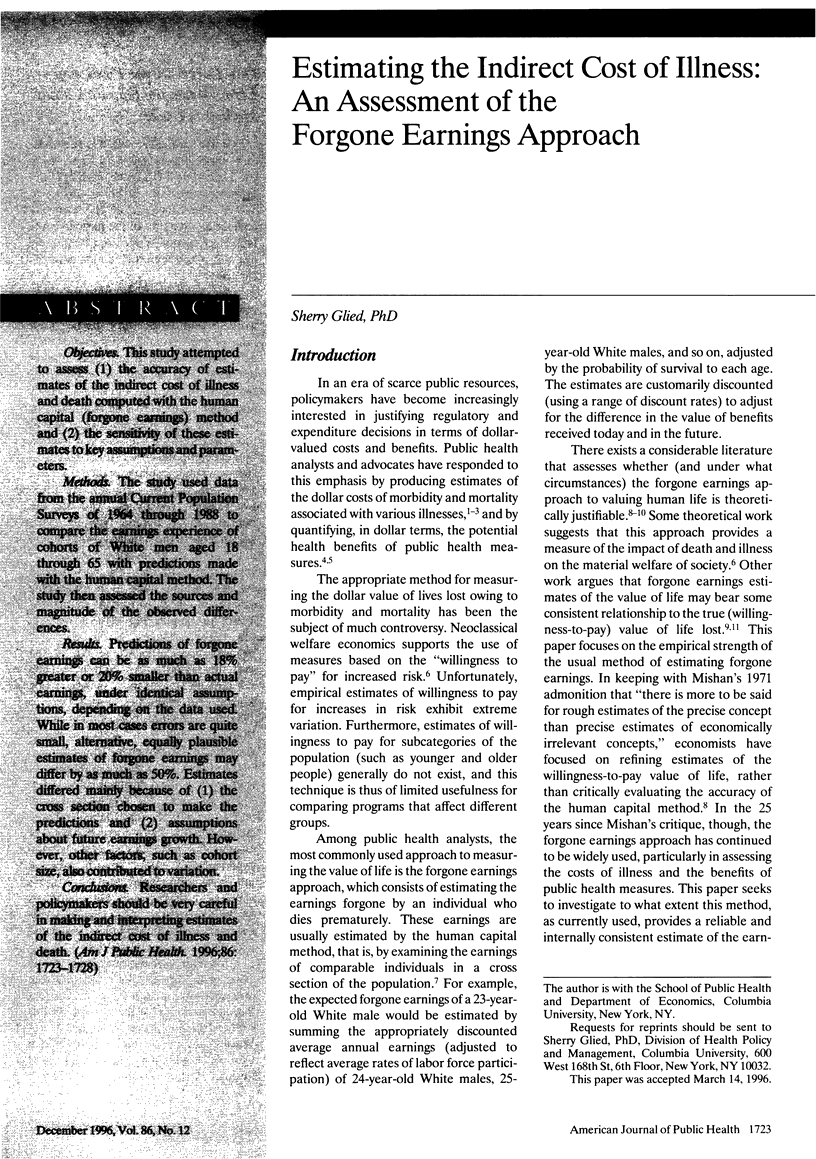
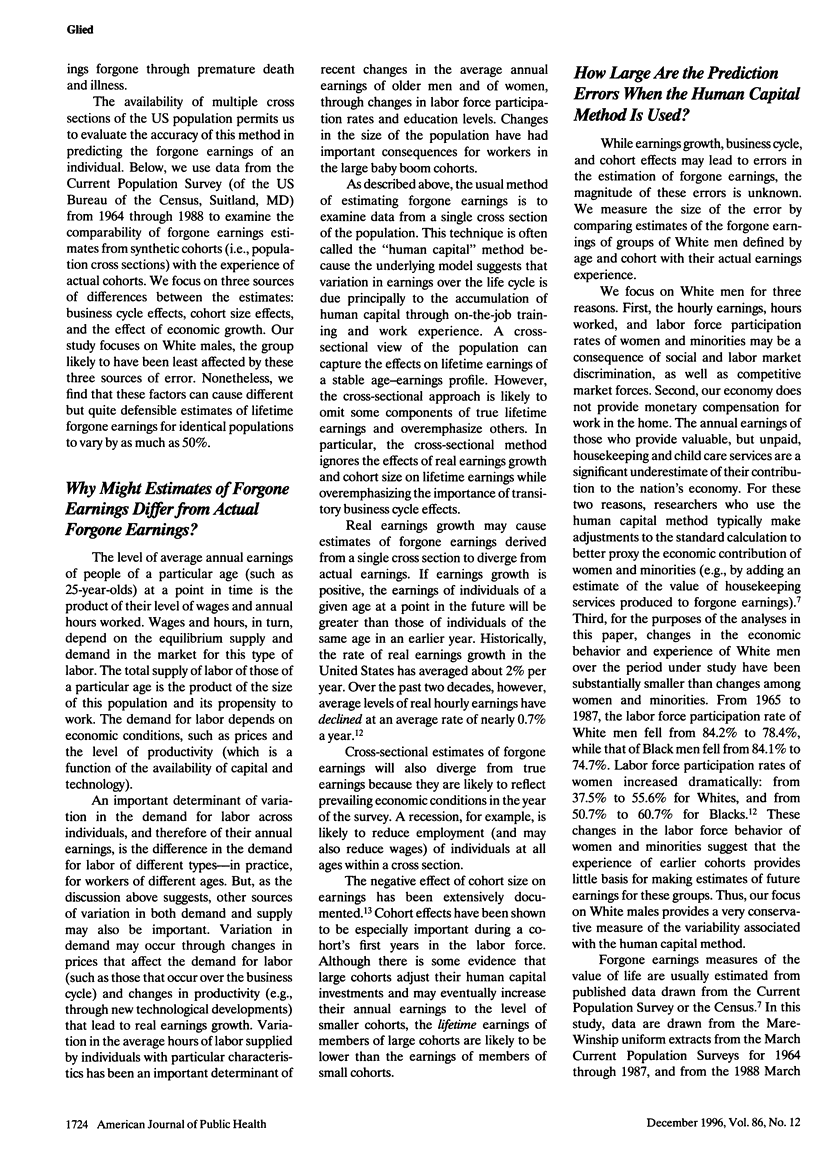
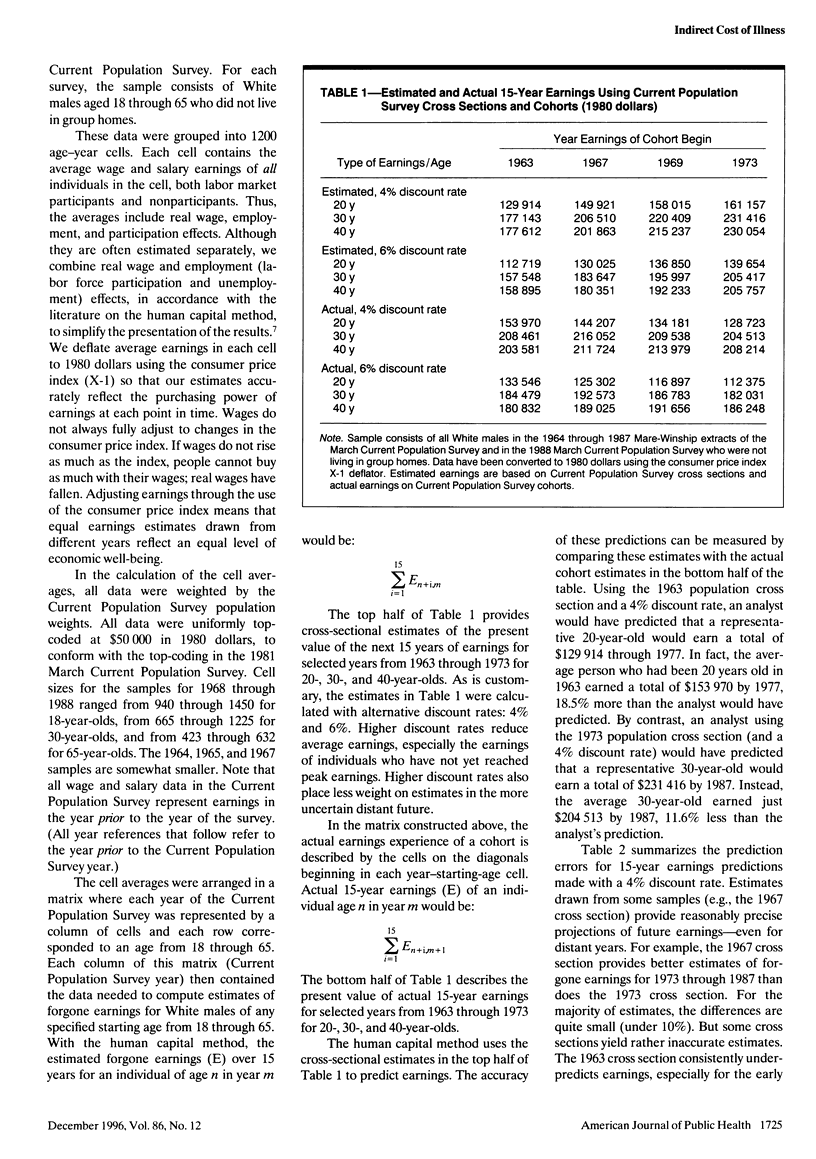
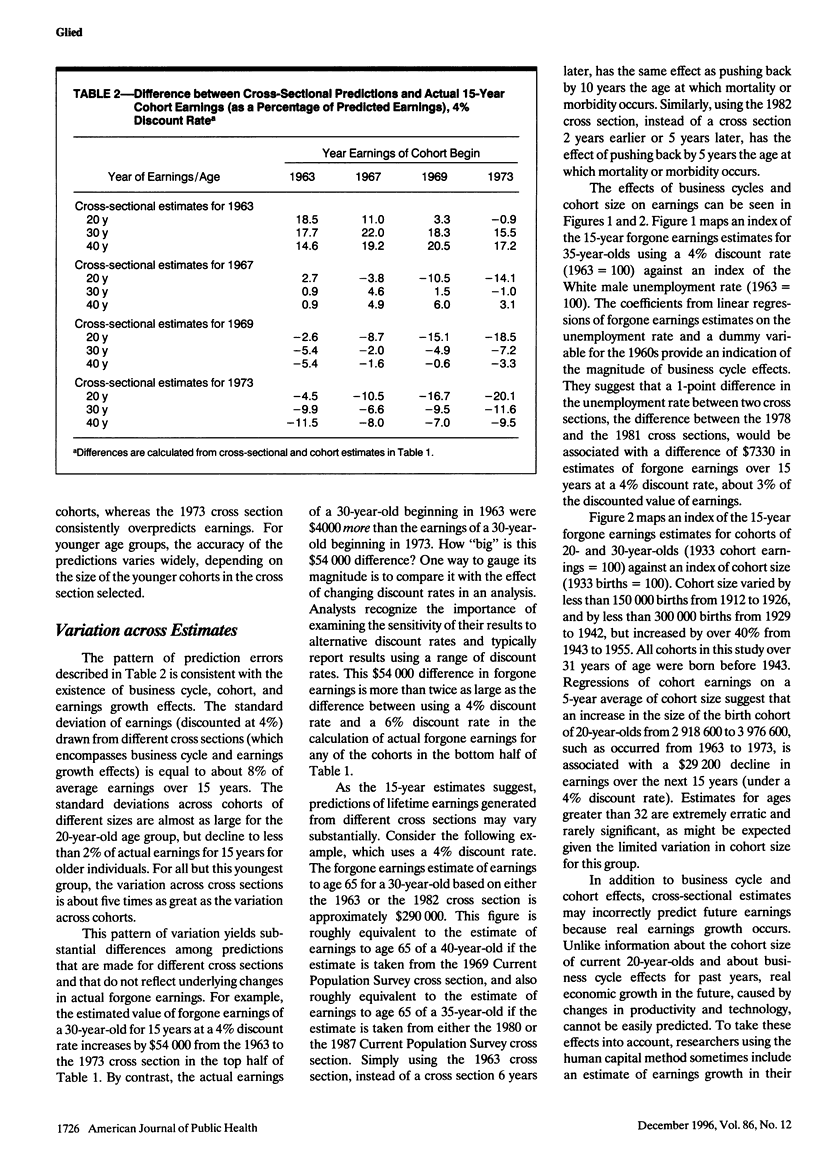
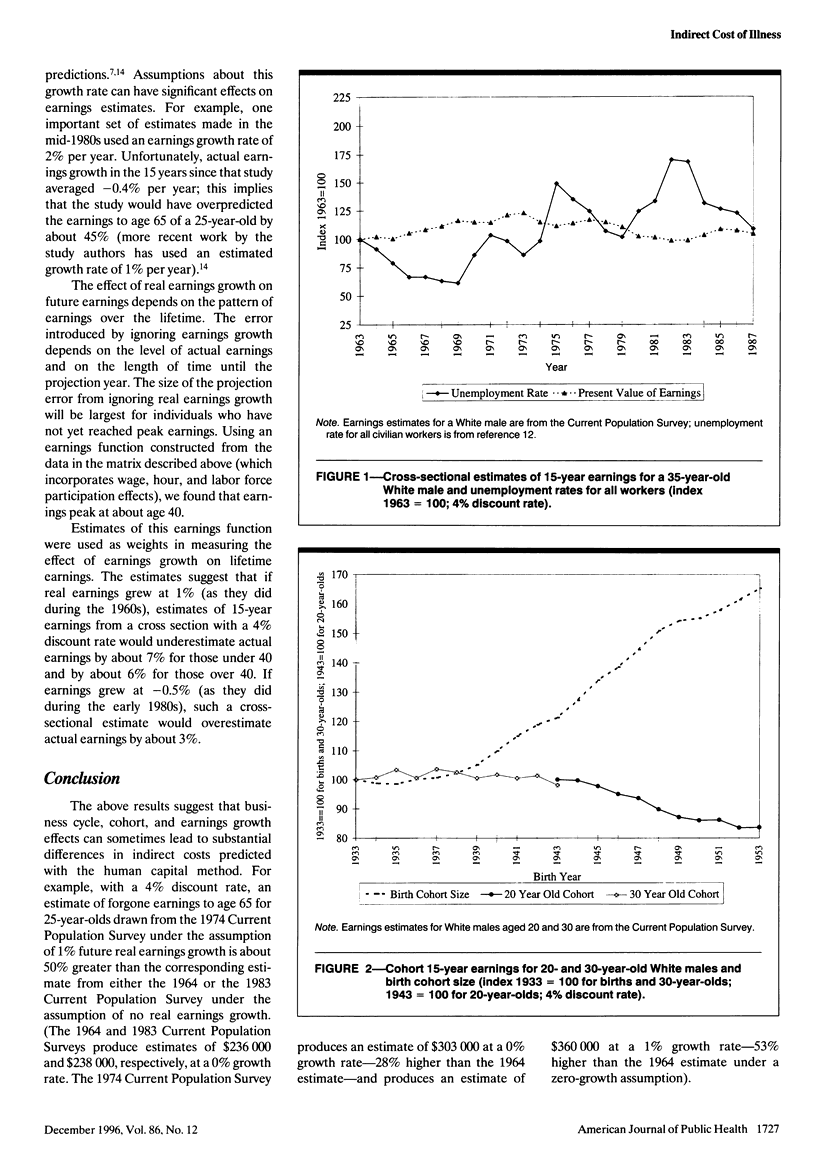
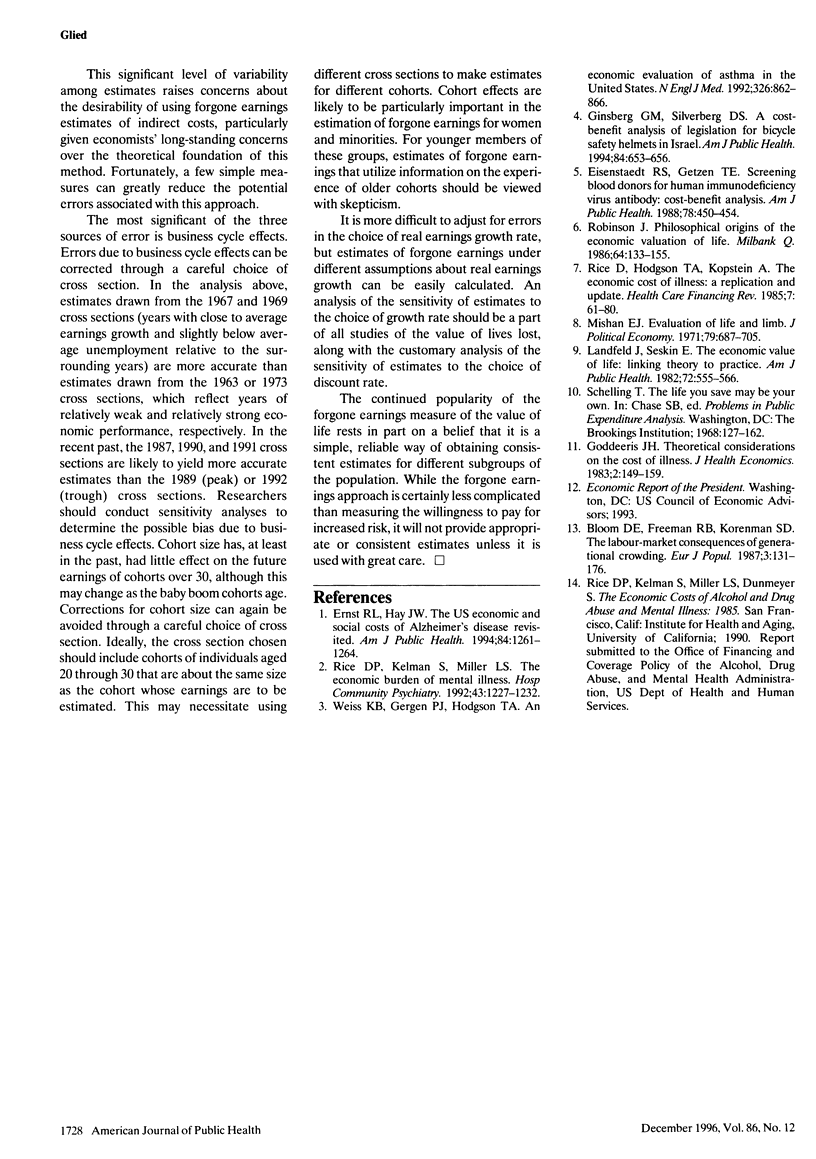
Selected References
These references are in PubMed. This may not be the complete list of references from this article.
- Bloom D. E., Freeman R. B., Korenman S. D. The labour-market consequences of generational crowding. Eur J Popul. 1988 May;3(2):131–176. doi: 10.1007/BF01796774. [DOI] [PubMed] [Google Scholar]
- Eisenstaedt R. S., Getzen T. E. Screening blood donors for human immunodeficiency virus antibody: cost-benefit analysis. Am J Public Health. 1988 Apr;78(4):450–454. doi: 10.2105/ajph.78.4.450. [DOI] [PMC free article] [PubMed] [Google Scholar]
- Ernst R. L., Hay J. W. The US economic and social costs of Alzheimer's disease revisited. Am J Public Health. 1994 Aug;84(8):1261–1264. doi: 10.2105/ajph.84.8.1261. [DOI] [PMC free article] [PubMed] [Google Scholar]
- Ginsberg G. M., Silverberg D. S. A cost-benefit analysis of legislation for bicycle safety helmets in Israel. Am J Public Health. 1994 Apr;84(4):653–656. doi: 10.2105/ajph.84.4.653. [DOI] [PMC free article] [PubMed] [Google Scholar]
- Goddeeris J. H. Theoretical considerations on the cost of illness. J Health Econ. 1983 Aug;2(2):149–159. doi: 10.1016/0167-6296(83)90004-8. [DOI] [PubMed] [Google Scholar]
- Landefeld J. S., Seskin E. P. The economic value of life: linking theory to practice. Am J Public Health. 1982 Jun;72(6):555–566. doi: 10.2105/ajph.72.6.555. [DOI] [PMC free article] [PubMed] [Google Scholar]
- Rice D. P., Hodgson T. A., Kopstein A. N. The economic costs of illness: a replication and update. Health Care Financ Rev. 1985 Fall;7(1):61–80. [PMC free article] [PubMed] [Google Scholar]
- Rice D. P., Kelman S., Miller L. S. The economic burden of mental illness. Hosp Community Psychiatry. 1992 Dec;43(12):1227–1232. doi: 10.1176/ps.43.12.1227. [DOI] [PubMed] [Google Scholar]
- Robinson J. C. Philosophical origins of the economic valuation of life. Milbank Q. 1986;64(1):133–155. [PubMed] [Google Scholar]
- Weiss K. B., Gergen P. J., Hodgson T. A. An economic evaluation of asthma in the United States. N Engl J Med. 1992 Mar 26;326(13):862–866. doi: 10.1056/NEJM199203263261304. [DOI] [PubMed] [Google Scholar]


